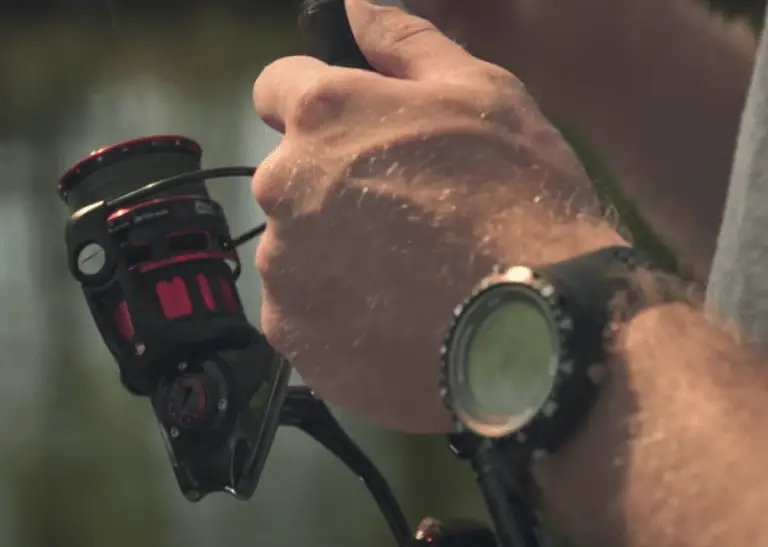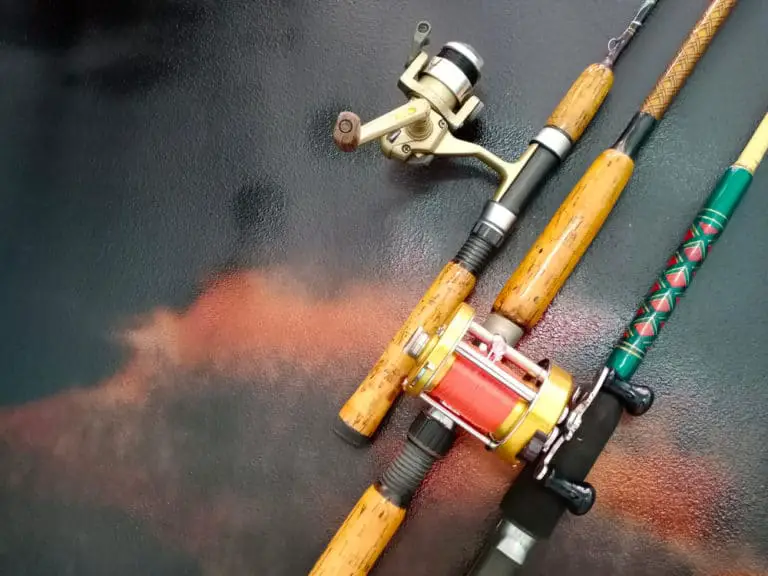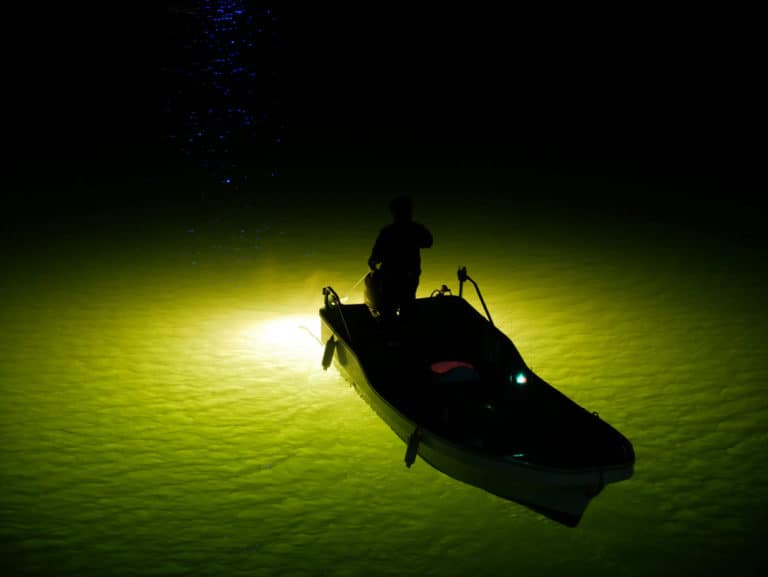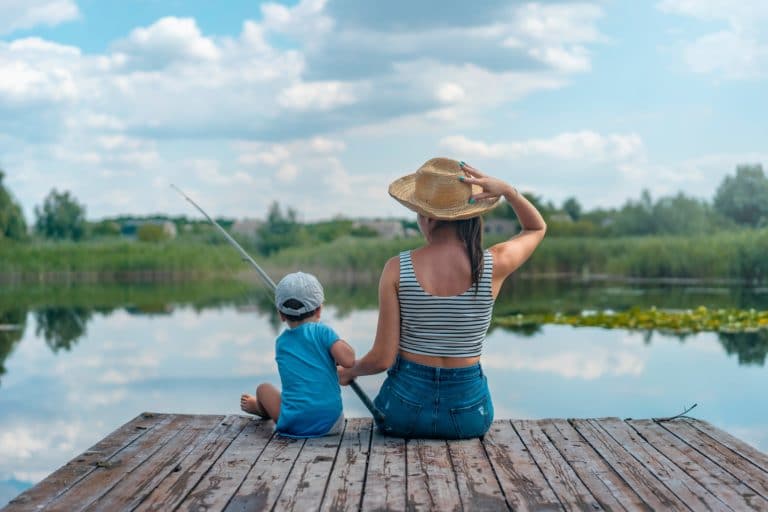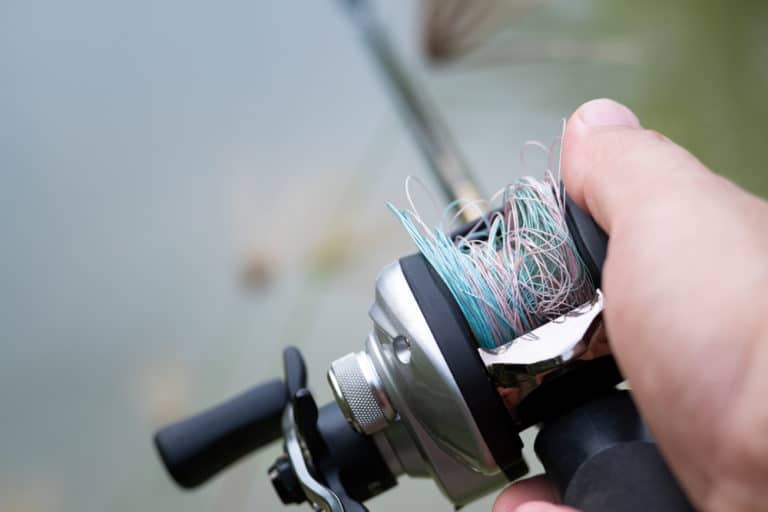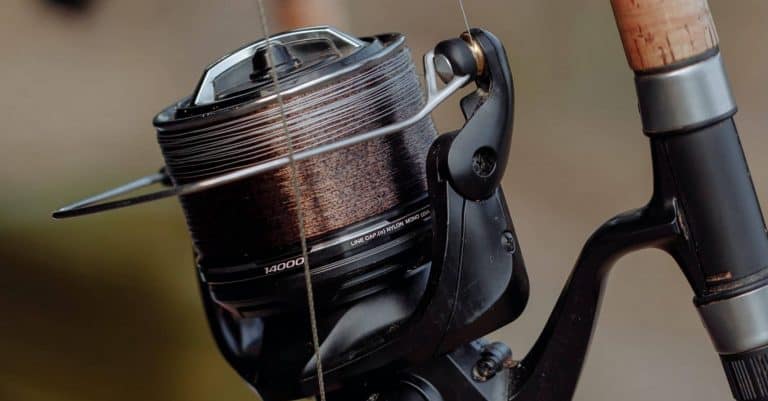15 Best Jig For Crappie Fishing
If you’re new to crappie fishing, you’ll know how tough it is to choose the right jig colors. Below, we’ll take you through the 3 best colors whatever the water conditions and whenever you’re fishing, as well as give you a few more tips and tricks for crappie fishing.
You may notice that a lot of colors will come up more than once and that’s not an accident. This is because some colors will work just as well in stained waters as they do in clear. Before we get into it though, let’s take a look at why colors are so important.
A crappie’s diet consists mainly of small gray, or silver colored fish, as well as crawfish, worms and insects. But these small gray, silvery fish are a big part of their diet and this is what you should be trying to mimic. Their varied diet means that many colorations will be tempting for a crappie. They are sight feeders, and are incredibly sensitive to color.
That being said, many of the bizarrely colored jigs you’ll see in stores will appear gray or silver when viewed underwater, and this is particularly true in dirty and stained water. A good way to see this for yourself is to fill up a large glass jar with dirty lake water and drop some brightly colored lures in.
Because crappie are so sensitive to color, one slight variation in color combination can make a big difference from one catch to the next. Their sensitivity to color is what makes jigs so effective. You have 4 or more pieces of your bait that you can use to tweak the color (the jig head, the jig body, the jig tail and the hook color), and you’re free to mix the colors up!
While we’ll talk about other colors below, the 3 colors that every crappie fisherman should have in their tacklebox is white, pink, and chartreuse and these are the three colors you should definitely start with.
Table of Contents
3 Best Color Jig for Crappie at Night
A crappie’s color preferences can vary throughout the day, depending on how bright it is, how deep you are fishing, and the time of day.
If you’re not getting a bite on a color you were using earlier in the day, or at a different depth, there’s no reason why you can’t keep swapping out jigs until you get results.
The ever changing nature of color preference makes using a multi-colored jig more effective. If a color stops attracting the crappie, then maybe another one will get their attention.
On cloudy days or in the evening, a crappie’s visibility is weaker than it would be on sunny days. Therefore, you need to pick a crappie jig color that provides contrast against the cloudy, sunless sky.
Darker, more natural colored jigs like black, brown or olive jigs may work, as they provide contrast against the sky and make it easier for the crappie to see and take your jig.
3 Best Color Crappie Jig for Muddy Water
No matter where you fish for crappie, the waters will experience high levels of turbidity. Some will only get muddy after periods of rain and run-off, during the turbulence of fall turnover, while some will just be muddy all year-round.
When you’re first faced with muddy-water conditions, it may not seem worth it to try fishing. But don’t let muddy water put you off, the crappie are certainly not put off by it!
They don’t quit feeding because the water lacks clarity, they will eat just as often in turbid water as they do in clear water. But to catch them, you do need to employ special fishing tactics.
Muddy-water crappie are likely to be in more shallow habitats because the oxygen levels are much better there. They also hold very tight against woody cover features.
This is because these features give them a sense of security when visibility is poor. You’ll often find them inches away from features such as snags, stick-ups, and stumps, etc.
Fishing for muddy-water crappie may also be best to do on sunny days. But if it isn’t sunny, fishing in the early morning or evening may also work. But on a sunny day, fishing at midday in muddy waters may yield the best results.
Muddy water to a crappie is what a foggy night is to us. Visibility is extremely limited. Just like ship captains have to rely on radar rather than sight to navigate these tough conditions, crappie also can’t rely on sight alone. As their visibility decreases, they will rely more on sound, vibrations, and odor to find food.
Opaque colors like blue, pink, and orange will work better in stained and muddy waters. These jigs will contrast well under water so that the crappie can see them from a distance.
In contrast, opaque colors or translucent colors help bait to blend in with the surroundings, making them more natural-looking. Translucent colors work better in clear water, but more on that later!
3 Best Crappie Jig Colors for Stained Water
It has to be said that some lakes do seem to have a few colors that are ‘best’ for those particular bodies of water. For example, in some stained waters an orange jig head with a chartreuse body will be the most effective bait. This is why it’s so important to experiment with colors in your lake of choice.
When jigging for crappie, some people use two poles at a time, holding one in each hand. If you try this, a simple white or chartreuse jig with a white or lead head is a good starting point.
Tie that onto the pole, then use the second pole to experiment with various colors. This not only lets you experiment with what colors work for you, but you can catch some fish at the same time!
Chartreuse is an extremely popular fishing lure color for a reason. One, it looks like a fish when underwater, and it is a hit in both clear and stained waters.
Chartreuse is a color you can’t live without! Even if you don’t go all in with chartreuse, you should still have it in your tackle box and part of your setup.
White and chartreuse and pink and chartreuse are a good combination, and when fishing on a new body of water, you can’t go wrong with chartreuse.
Colors don’t look the same in water as they do in broad daylight above the surface. Water clarity, light penetration, depth and even temperature can affect how a fish sees certain colors.
Opaque lures tend to hold their color in more stained water and are more visible at greater depths. Red fades quickly in great depths, while opaque chartreuse and white offer good visibility, both in lightly stained or very dingy water.
Besides chartreuse, white, and pink, other colors that work for stained waters include black, orange, gold, and lime. Good combinations are black with pink and chartreuse, blue with chartreuse, red with chartreuse, orange with chartreuse, gold with chartreuse, and lime with chartreuse.
Blue and white, and pink and white are also good combinations.
3 Best Crappie Jig Colors for Clear Water
While white isn’t the most exciting fishing lure color, it definitely works. The most obvious reason for this is most bait fish have some shade of white in their coloration. A white jig body with a chartreuse tail is a particularly good color combination, and white works in both clear and dingy water.
We’ve already talked about how crappie usually stick to the shallows in stained or muddy water, clinging to cover features like stumps and brush. In clear water, however, crappie prefer deep water, which makes them harder to find.
Crappie also prefer deeper water in sunnier conditions, and on sunny days it is better to fish either early or late in the day when there are more clouds. Crappie are more active during this time of day, cruising and feeding in shallow water.
Clear lakes also provide perfect conditions for the growth of green aquatic plants that thrive in the sunlight. If you notice beds of aquatic vegetation when you go fishing, take a closer look to see if crappie are hiding in the cool shade around the greenery.
White, chartreuse, or blue are effective colored jigs in clear water, and you should opt for natural, subdued, or translucent colors in general. Other colors that work are brown, or motor oil shades. Good combinations include white and chartreuse, or blue and clear jigs. Plain or glittery jigs work equally well.
3 Best Marabou Jig for Crappie
While live bait is incredibly effective when fishing for crappie, most anglers would recommend a combination of panfish jigs and soft plastic when discussing effective presentation. You just can’t beat a jig for its versatility, efficiency, and effectiveness.
Not only do plastic jigs help you catch larger numbers of crappie, but they also trigger strikes from the biggest slabs in the lake. There are three popular types of jig out there.
Tube jigs: This type of jig is probably the most artificial bait, and is known for its versatility. They come in hundreds of colors, and their spiralling fall is undoubtedly intriguing to crappie.
Jig and paddle tail: A newcomer to the crappie plastics scene, the pogy or paddle tail plastic has been used by a few crappie tournament winners in the past few years. Crappie (especially trophies) are usually minnow chasers, and paddle tails resemble minnows. Jig and pogy combinations work best when trolled, casted, or vertically jigged.
Marabou jig: Marabou is made from the soft downy feathers of a chicken, and when submerged creates a flowing, undulating motion that is more lifelike than any other material and is very tempting to a crappie. Marabou panfish jigs are excellent when hooped around stumps, skipped under docks, or tipped with a minnow under a bobber.
The best colors for a Marabou jig would be brown, chartreuse, or black. Brown or black will give you the best results in clear water because they are natural looking (white can also work). Meanwhile, going with a brighter color like chartreuse will work in dirty water.
When it comes to gear you’ll use to fish the Marabou jig, there are many combinations to choose from. You’ll want to go for a lighter-weight spinning rod. This is because these jigs are not very heavy, so you’ll need something that can cast them at a good distance.
Braid is an excellent choice for a fishing line, especially with a fluorocarbon leader at the end. Braid casts lot better than mono or fluoro because they’re a lot stronger and more sensitive. For crappie, a 10lb braid works best.
You’ll also want to get some sort of float. This helps if you’re fishing in an area that has a lot of weed or objects that will cause equipment to snag. If you’re fishing in an area that just has a lot of rocks but an otherwise pretty clean bottom then a float isn’t necessary, but using a float does prevent a lot of frustration!
There are also a few methods to consider when fishing a Marabou jig. It’ll all depend on what the water conditions are, and how much work you are prepared to do.
Cast and retrieve: This is one of the most basic techniques for fishing with the Marabou Jig but it is still effective. All you need to do is cast it out as far as you can, let it sink down to the bottom, and gradually start retrieving. You should reel in at a pace that has the jig just above the ground.
Cast and retrieve with twitch: This is more of an advanced method than the method above, but you will catch a few more crappie. Cast it out as far as you can, let the jig sink to the bottom, slowly reel in, and give your rod a little twitch every few seconds. This will make your lure more active as it moves through the water, which should greatly intrigue the crappie.
Cast and sit: This is the most basic method of fishing a jig and is perfect if you want to spend a nice day out on the water. The first thing you’ll want to do is attach a bobber or a float so that your jig is sitting just above the ground.
Then just cast it out as far as you can and wait. If you’re fishing in still water then you’ll need to twitch your rod or reel in a bit. However, if there’s waves or wind, then it should be alright to just leave it.
Jig: This is a fantastic method, but is the most effective in an area that has nothing to get snagged on. If there are logs, grass, weeds, or anything else sitting on the bottom then you’ll have to use one of the above three methods instead.
If the bottom is just rock or sand then you should be alright. Just cast it out as far as you can, let the jig sink to the bottom, lift your rod tip up, let the jig sink back down, and then repeat.
Conclusion
Now that we’ve identified some good crappie colors you may have noticed a pattern, and you may be wondering why crappie are drawn to pink, chartreuse, and other such vibrant, unnatural colors. Basically, it’s because jig colors appear different underwater than how they would appear on the shelf, particularly in stained or deeper water.
Many colors just appear as different shades of white and gray underwater, even if they don’t look like that on dry land. These colors transform into a particular shade of a fish-like color that is highly visible for a fish that resembles what they normally feed on. Chartreuse is a perfect example of this.
Chartreuse is a popular lure color in part because it has a yellow tint that is found in certain sunfish, but also because its brightness makes the lure stand out while appearing natural at the same time. This wacky yellow color fades to a more muted fish-like color underwater and the same can be said about pink.
A couple of quick tips to remember when selecting jigs for fishing is to use a color that’s actually visible in the color of water where you are fishing, and to use colors that mimic what crappie are already feeding on.
In stained water, go for dark or very bright, opaque colors. The more stained the water is, the more effective dark colored jigs will be.
Meanwhile very bright colors work in stained waters (although it seems like the opposite should be true). In clear water, stick mostly to translucent or natural colors like whites, grays, browns, or even good ol’ chartreuse!
However, sometimes you’ll have to disregard color selection rules, especially during the spawn.
Fish are more aggressive during the spawn, and this is a good time to tie on really bright colors. At this time of year, the more fish you can get to see your bait, the better.
You may have also noticed during visits to the store, that there will be many jigs in the same colors just in different shades. During the spawn is when you should experiment with brighter shades of your favorite colors. For example, bright shades of orange, chartreuse, and pink are good options this time of year.
However, colors often do fade after being submerged, and we’ve already talked about how colors will appear less bold once submerged. For example, red fades fast and will probably be the first color in your tackle box to fade.
This is why red crappie fishing line is so common on store shelves. The logic behind this is that red line disappears quickly under water, and therefore will be invisible to fish,
Chartreuse also fades rather quickly underwater. It’s bold shade is subdued when viewed beneath the water’s surface and cleverly replicates the coloration of bait fish.
Blue, meanwhile, is one of the few colors that holds onto their pigment under water. Blue is a desirable hue when it comes to bait, and is a popular crappie jig color. Blue and chartreuse, blue and white, and blue and clear-colored jigs can be very effective combinations.
Black, on the other hand, contrasts extremely well. The fact that black contrasts well under water seems pretty obvious, but it does this while looking natural. It also works well for crappie as a lot of what they eat has a black coloration on them. This is why black is a good option for when water becomes more stained.
After all, above looking natural or particularly tantalizing, you just want the fish to be able to see your jig, and this is where black really shines. Black and chartreuse is an extremely popular jig color, and with good reason. The black is striking and gets the attention of the crappie, while the chartreuse is bright and tempting.
When you first start crappie fishing, deciding which colors to buy can be tough. While experimenting is the best way to find the most effective color combination for you, speaking to other anglers and reading articles like this gives you more of an idea of what color jigs you should go for.
While many beginners use minnows to catch crappie, using jigs makes for a more challenging and rewarding experience. With trial and error and with the above information in mind, you’ll soon settle on certain colors that will produce consistent results on your lake of choice.
We hope this article has been a useful guide as to what colors work best in certain conditions, and how to fish for crappie at night, as well in muddy water, stained water, clear water, or with marabou jigs.
While you will quickly discover a set of colors that suit your lake best, we definitely recommend starting off with chartreuse, white, and pink. You can’t go wrong with these shades!

